Ready, Jet, Go!
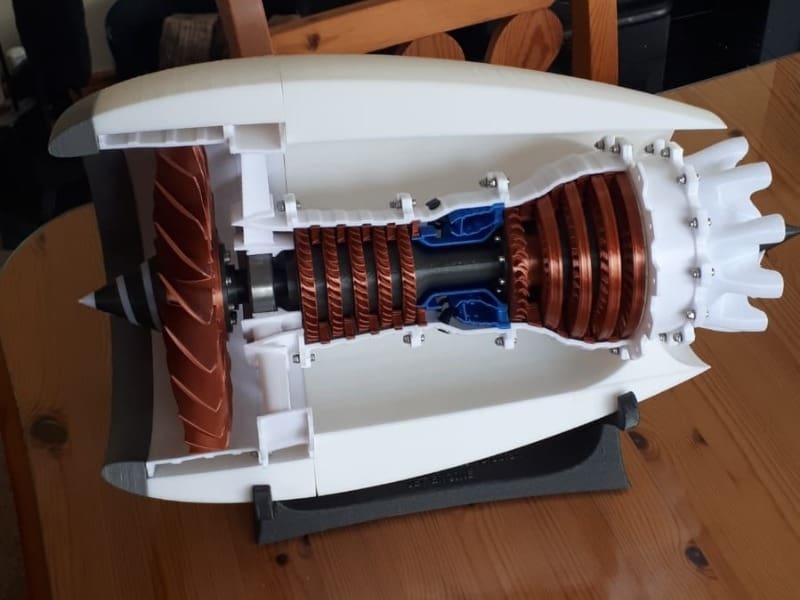
3D printing has been taking off for some time, so it’s no surprise that you can build model airplanes, complete with engines! The aerospace industry has been using 3D printing for some time, with the world’s first 3D printed jet engine built five years ago, and GE even used 3D printing to make the GE9X, the world’s largest commercial jet engine.
While you may not be making the world’s largest jet engine any time soon, you can indeed make models, some of which are even functional. So join us as we show you some fantastic 3D printed jet engine models you can build yourself!
If you’re intrigued by one of these models but don’t have the setup or time to attempt it yourself, check out Craftcloud. With suppliers around the world offering a huge range of materials and colors, your new engine will be flying to your door in no time.
So, fasten your seat belts, and let’s nosedive into the list!
Gasb Two
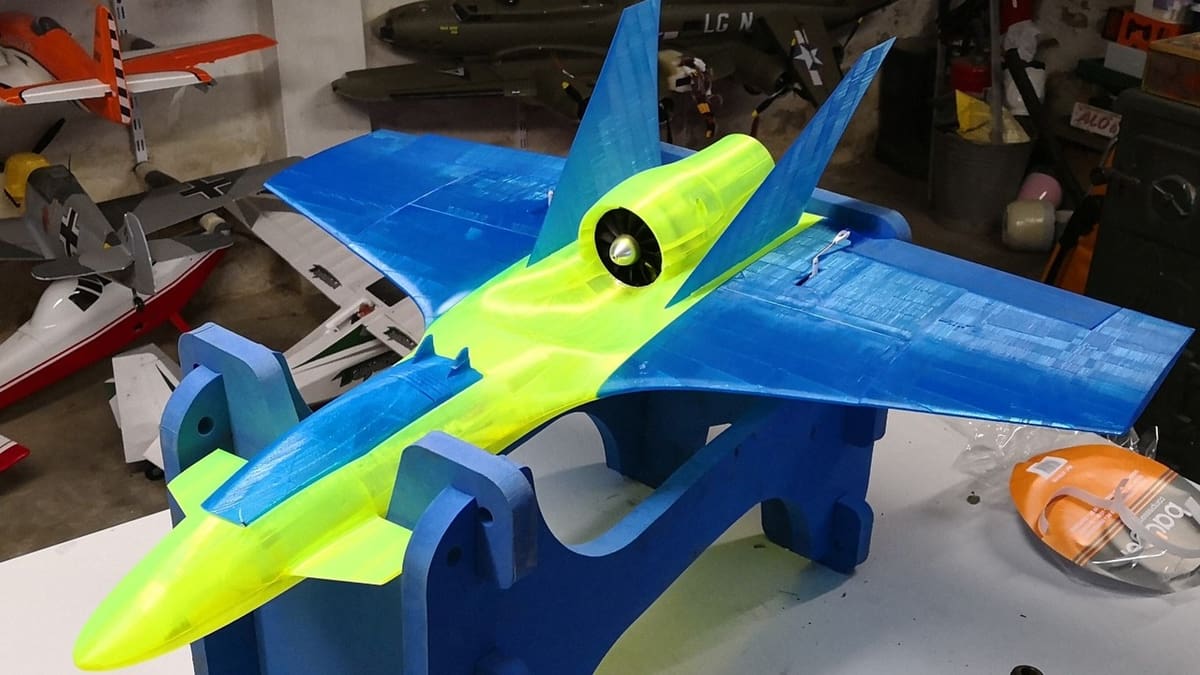
The “Gasb Two” uses a ducted fan jet, so while you’re not technically printing the engine, we’ve included it here as a great start for both 3D printing and RC aircraft hobbyists looking to experiment and learn about jet technology. It’s not as complex as some of the 3D printed jet engines below, but will require a few parts like the ducted fan module and some assembly.
If you need detailed instructions, the maker offers them for the price of a coffee, but if you read the comments and look at the other makes, you can probably figure it out without them!
Who made it? Carletto73
Who printed it? 37 Thingiverse users have made this model, and there are 9 Remixes. There are heaps of comments and printing details from other makers, so you should have no trouble recreating this model.
Where to get it? Thingiverse
Hand-Cranked
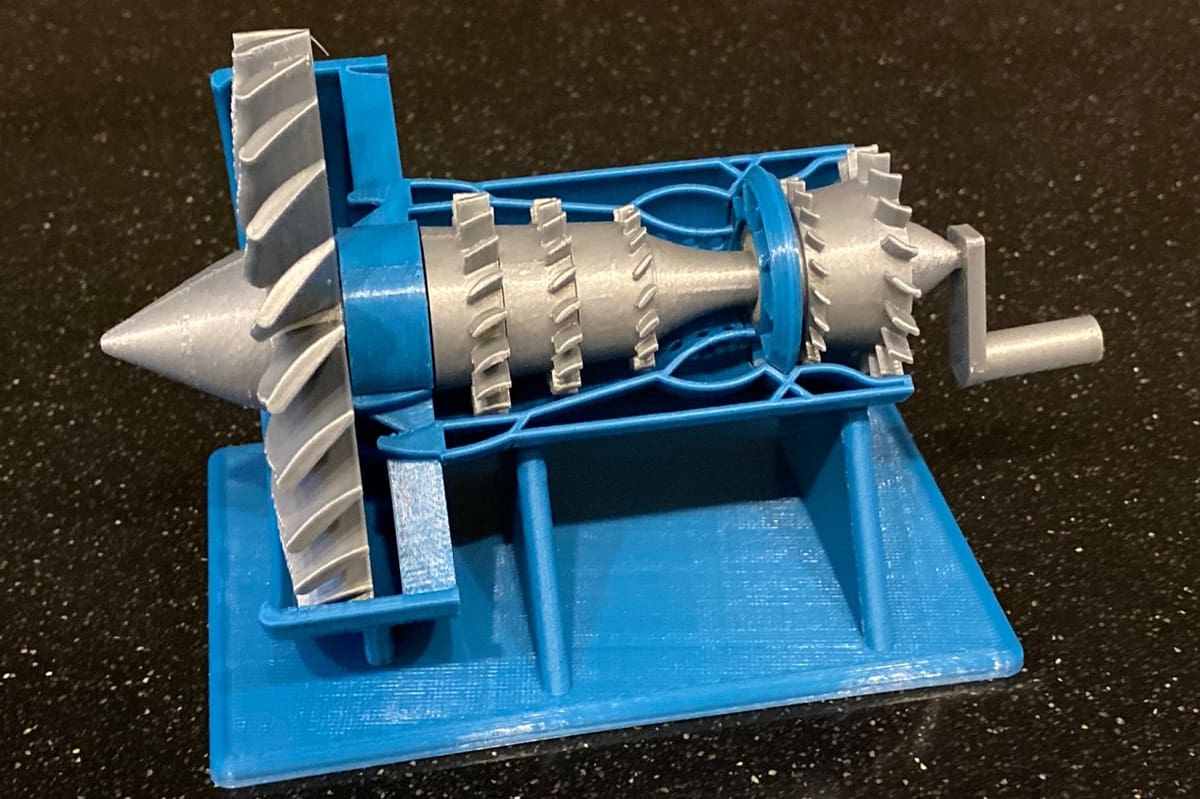
This hand-cranked model comes to us courtesy of General Electric, and is also a great start for anyone who wants to learn how a jet engine works. While this is just a model, it’s an excellent one for educators and aviation enthusiasts. It’s also simpler than some of the other desktop models in this list, so thanks to GE for making this available to the public.
This model will need some glue to assemble, but more importantly, patience as it will take half a day to print!
Who made it? GE
Who printed it? 275 Thingiverse users have made this model, making it the most-printed item on our list!
Where to get it? Thingiverse (instructions from Imgur)
Gas Turbine
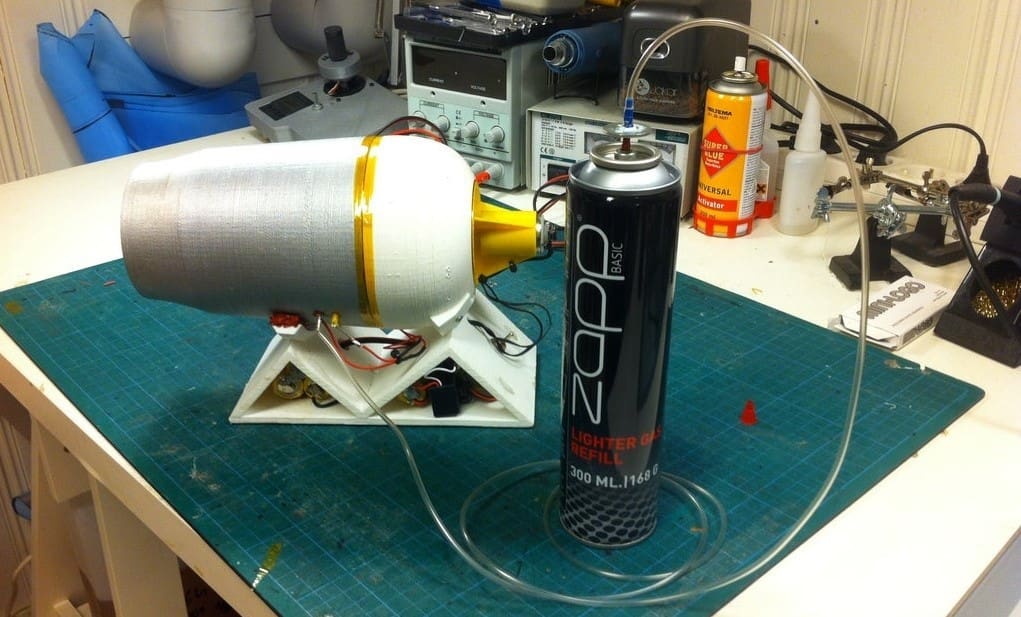
This gas turbine model might only be good for demonstration purposes, but the creator got theirs up to 40,000 RPM, which is faster than GE ran theirs! This model isn’t going to produce a lot of thrust, but it’s a great project for those serious about playing with gas turbines.
The hot end of this isn’t 3D printed, so you’ll need some supplies such as refractional cement, along with stainless steel and hybrid ceramic ball bearings, to complete this project. The maker offers more detailed instructions for a modest fee on their website, but the STL files are free for anyone to print.
Who made it? amazingdiyproject
Who printed it? Only one maker printed this, and it worked great for about five minutes, but then failed because they didn’t use the proper cement. Don’t make the same mistake!
Where to get it? Thingiverse
Compressor
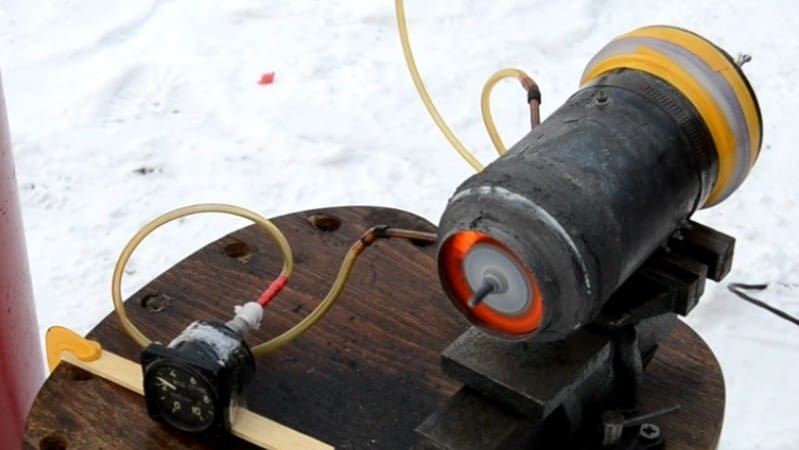
This project involves 3D printing a compressor as part of the construction of a tin-can turbine! You’ll need some hardware to go with the compressor and a few other 3D printed parts, but it’s well worth it.
Though it’s mostly useful for fun and demonstrations, this is a true turbojet engine, with its RPMs limited largely by simplicity and lack of precision of the design. If you want to get a little more complex, the creator recommends improvements such as lubrication and a thicker shaft.
This model will require some parts and tools such as screws, nuts, clamps, and other hardware. You’ll also need a rotary tool like a dremel and be prepared to do some metal work such as drilling and grinding to get this project off the ground. The designer specifically recommends printing in PLA.
Who made it? Laphicet
Who printed it? This upcycling project has nearly 400 likes and over 73,000 views on Instructables.
Where to get it? Instructables
Turboprop
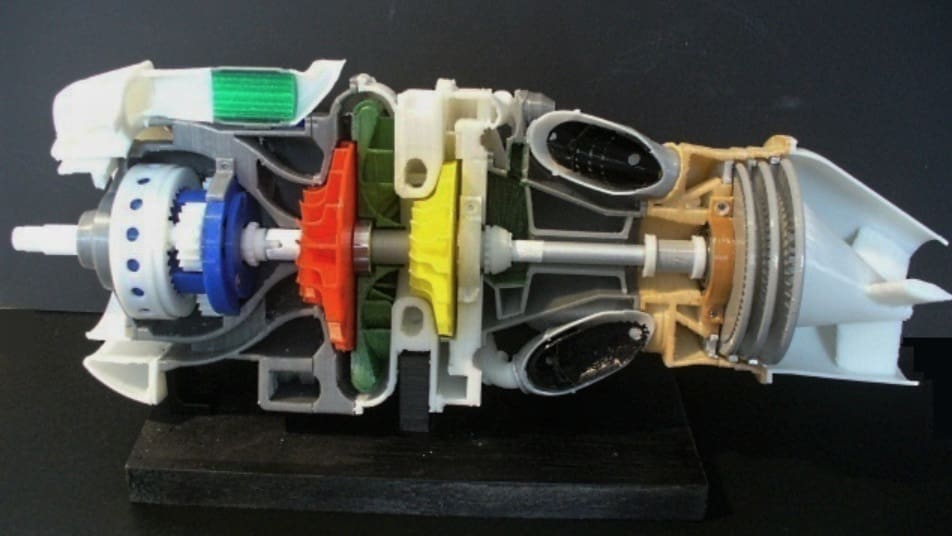
This model turboprop jet engine is modified from an earlier design so it shares the same parts list, requiring screws, bearings, and other assorted hardware to assemble. Though it’s a fairly complex print to complete, the result is a beautiful model that is perfect for educational purposes.
While the creator says the original design can be printed in approximately 50 hours, infill and other settings will depend on the part, and completing this model will require tapping, filing, drilling, gluing, and some other assembly.
Who made it? konchan77
Who printed it? This revised design has over 220 downloads, while the original has nearly 900, so there’s a lot of interest in this turboprop, though no one has shared their print as yet.
Where to get it? Cults
Simple
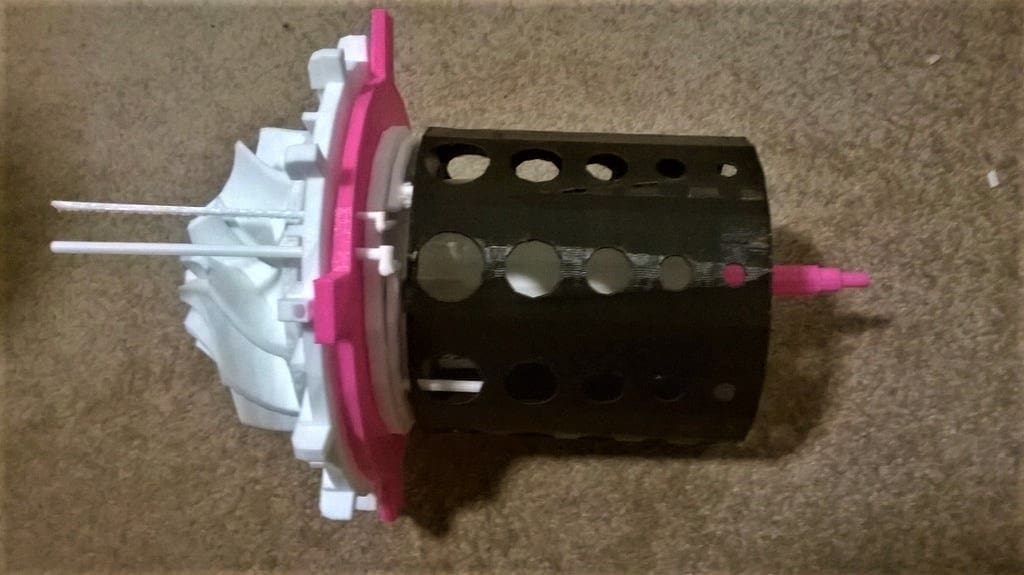
This jet engine is entirely 3D printed, aside from the bearings that go on the shaft. It’s great for anyone wanting a relatively simple model to print and learn about how a jet engine is put together.
This model isn’t as complex and involved as some of the others, but it’s still a cool moving model! Consider this one if you’re just eager to familiarize yourself with the inner workings of such an engine.
Who made it? YohannP
Who printed it? This project has been viewed over 3,000 times on Instructables, though no one has yet shared their finished product.
Where to get it? Instructables
Two-Spool
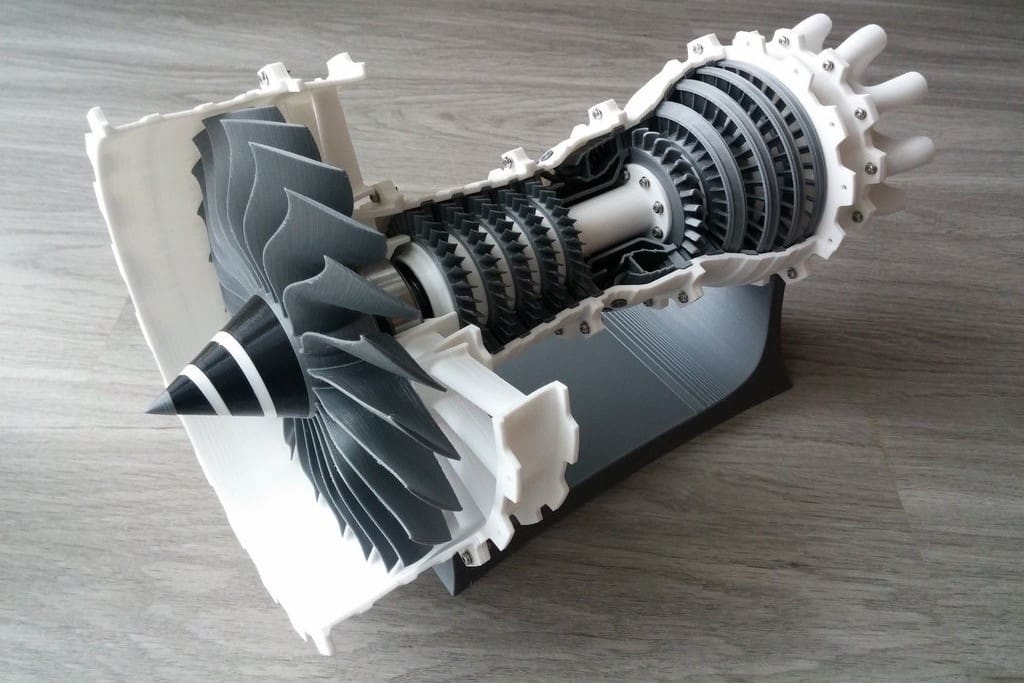
This model is somewhat unique in that it was designed from scratch with inspiration from existing engine designs. While this is still just a demonstration model, it looks quite impressive and is sure to capture the attention of students and enthusiasts.
This model has both full and cut-away section parts as well as ones with custom supports included. Both have caused some confusion and difficulties, so be sure to read over and pay close attention to the parts list. You’ll also need some hardware such as ball bearings and screws to complete assembly.
Who made it? CATIAV5FTW
Who printed it? 246 Thingiverse users have made this model, so it’s clearly a popular one, and the quality of the prints looks incredible!
Where to get it? Thingiverse
Low-Bypass Turbofan
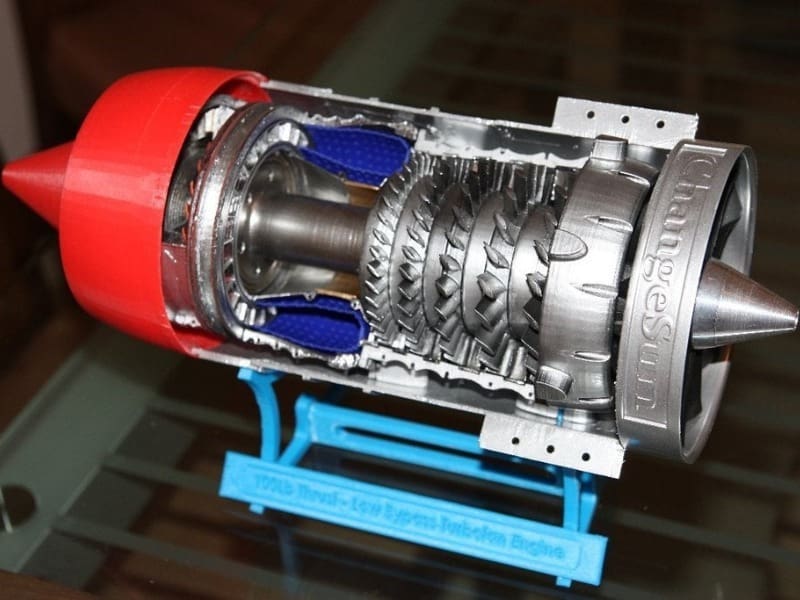
This 3D printed low-bypass turbofan engine uses a ducted fan module similar to the Gasb Two, so it may sound a bit familiar. To decrease the complexity of the model, the designer has introduced some “conceptual mistakes”, such as bearings directly mounted on hot components, but this is nonetheless a beautiful design to make and study.
You’ll need an assortment of hardware such as rods, glue, and rotors, as well as that ducted fan module. You’ll need to file, sand, and ream the parts to get them to fit properly, and the creator recommends printing the more detailed parts at higher resolutions.
Who made it? gahwar
Who printed it? Three Thingiverse users have posted photos of their Makes, and they all look amazingly precise.
Where to get it? Thingiverse
Compressed Air

This is a jet engine model that lets us view the combustion cycle in action by using an acrylic tube for the housing. It runs on compressed air, so this allows you to spin it up to a relatively high RPM without needing any flammable fuel, although you could attempt making a hand-cranked version if you prefer.
You’ll need some hardware such as the acrylic tube, bearings, and a drill, and enough patience to put it all together. One maker remarked that it needed no supports, however, they experienced trouble with overhangs curling, so we suggest reading about printing overhangs first to avoid any issues.
Who made it? Thalmano
Who printed it? In addition to the designer, two Thingiverse users have successfully made this model.
Where to get it? Thingiverse
Three-Spool
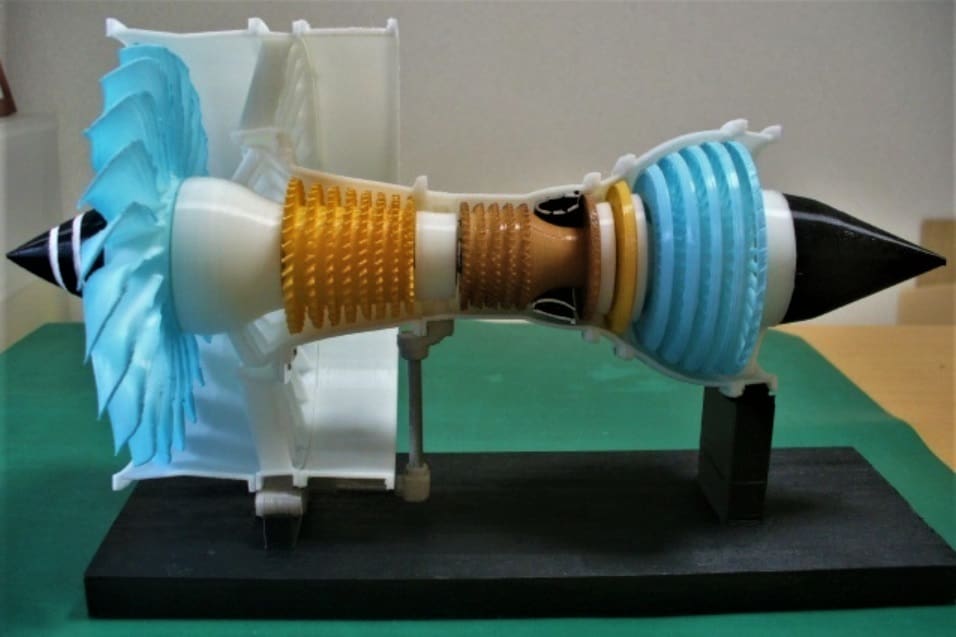
This model is a three-spool design, with a high bypass ratio that makes it more fuel-efficient and similar to the engines used in passenger jets. It’s a great piece to demonstrate the basics of a three-spool jet engine design. If you want to see it really spin, you might have to modify it to include a crank mechanism, but it’s still an excellent model worth printing.
This model requires no rafts or supports, though it will need assorted hardware such as screws and bearings, and you’ll need to file, drill, and sand some parts to complete assembly as well.
Who made it? konchan77
Who printed it? This model has been downloaded more than 300 times, and there are detailed instructions for you to follow on Cults.
Where to get it? Cults
Lead image source: bjamestx via Thingiverse
License: The text of "3D Printed Jet Engines: 10 Great Projects to DIY" by All3DP is licensed under a Creative Commons Attribution 4.0 International License.
